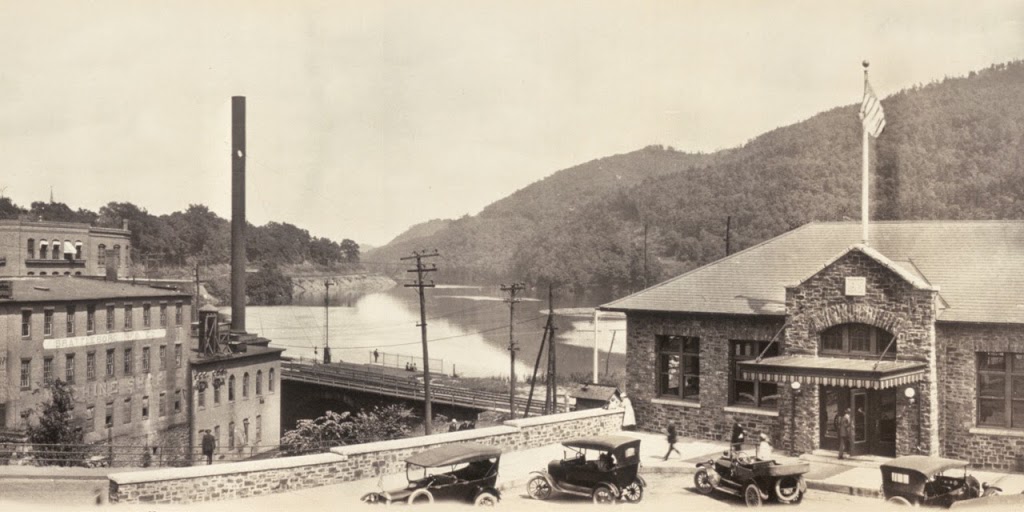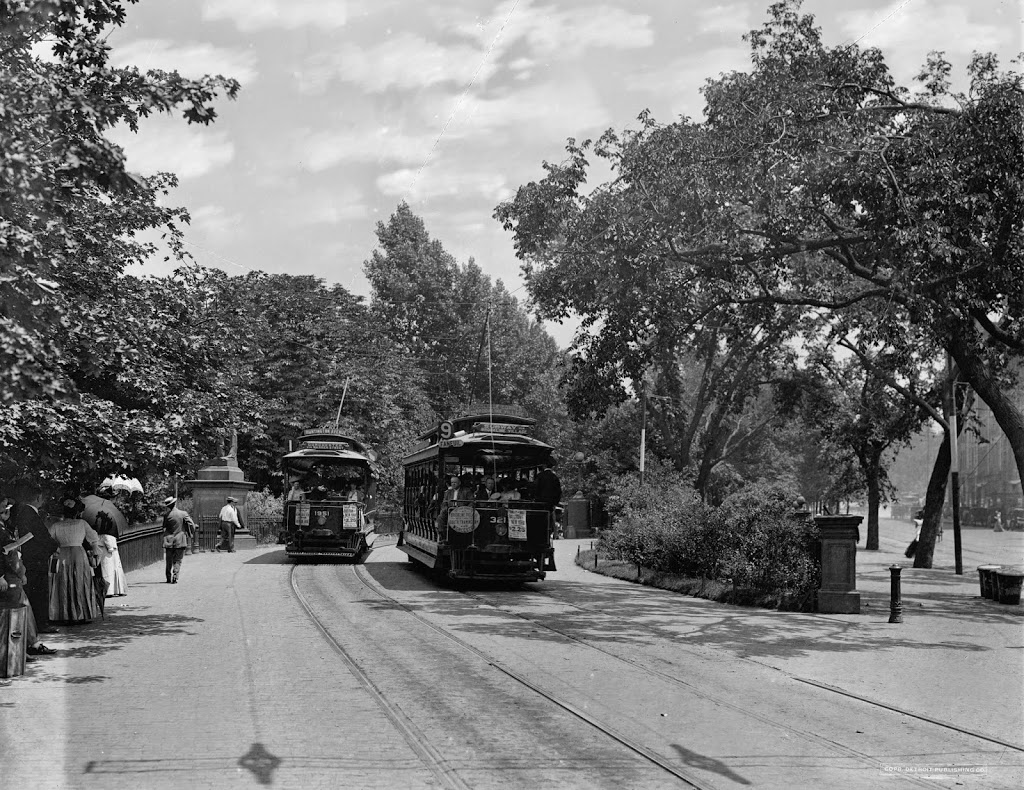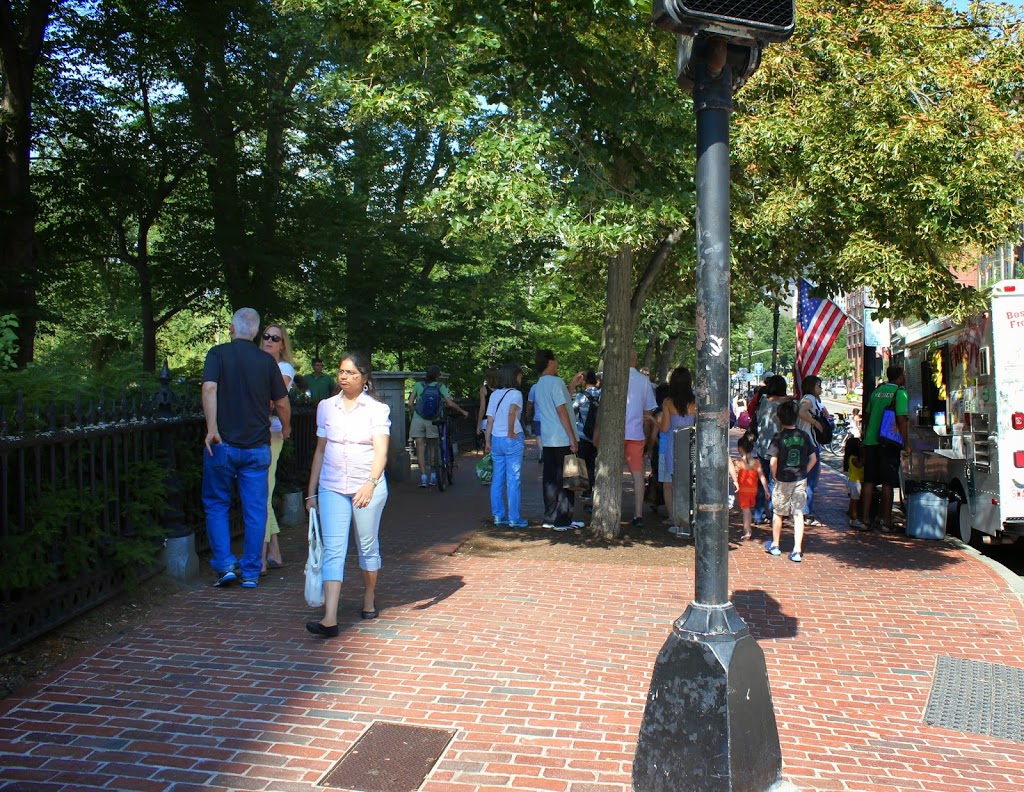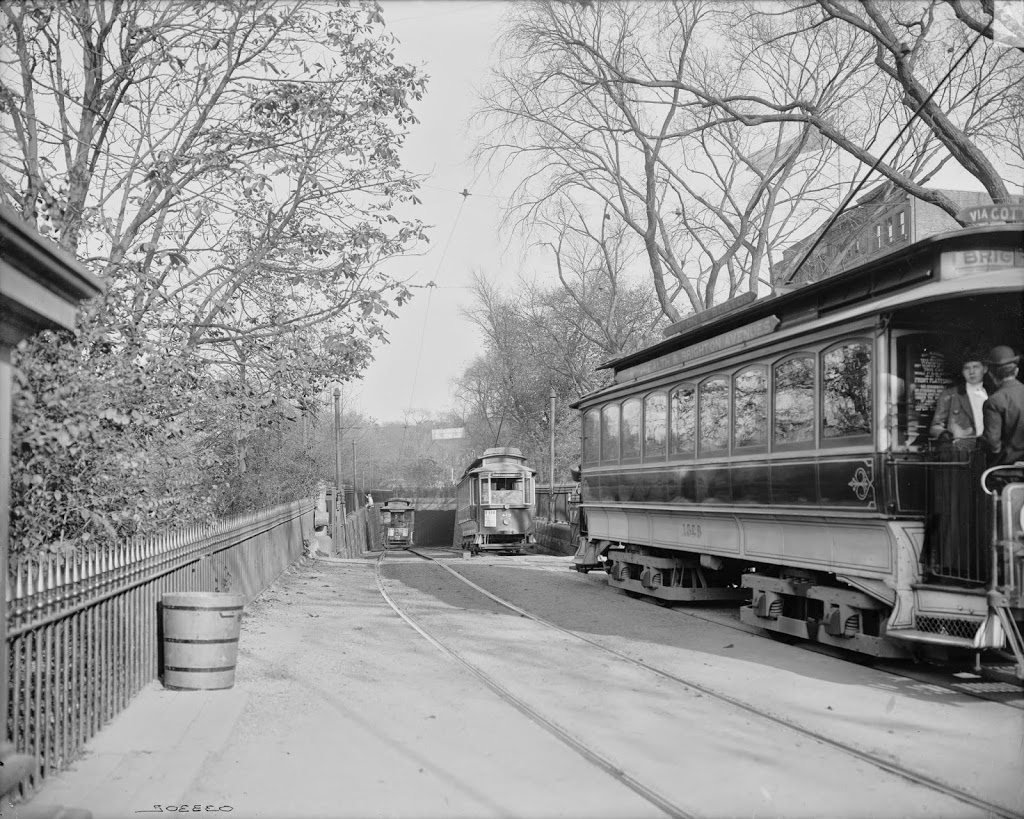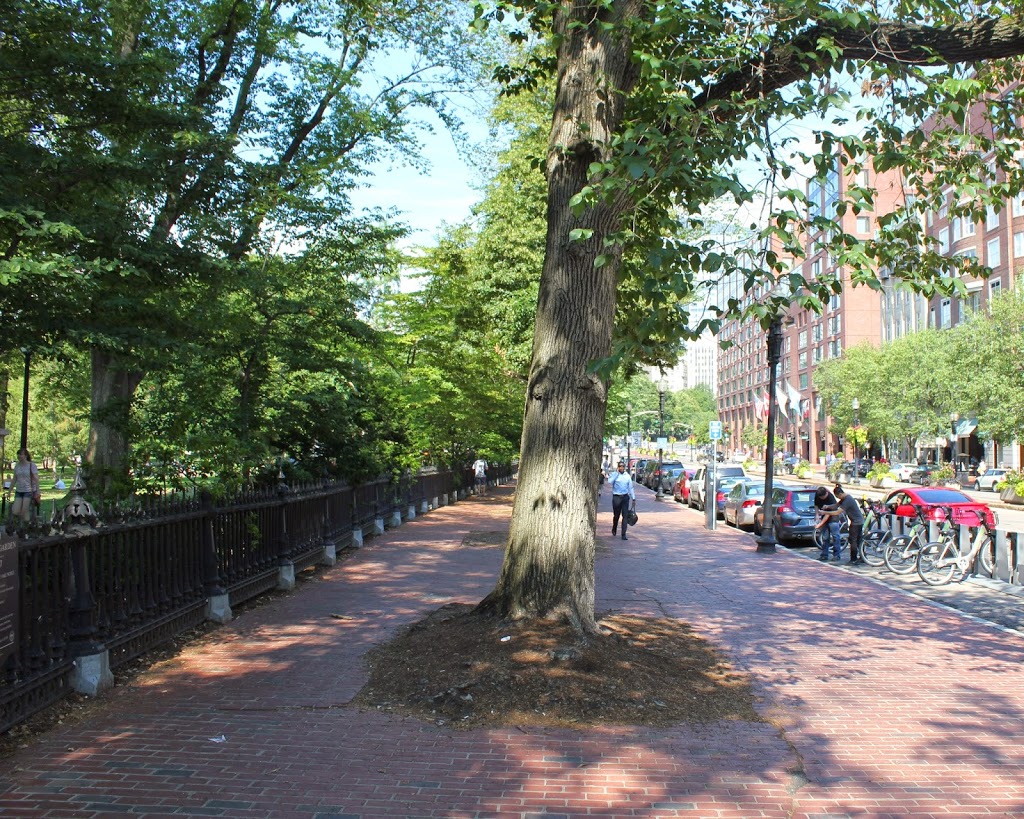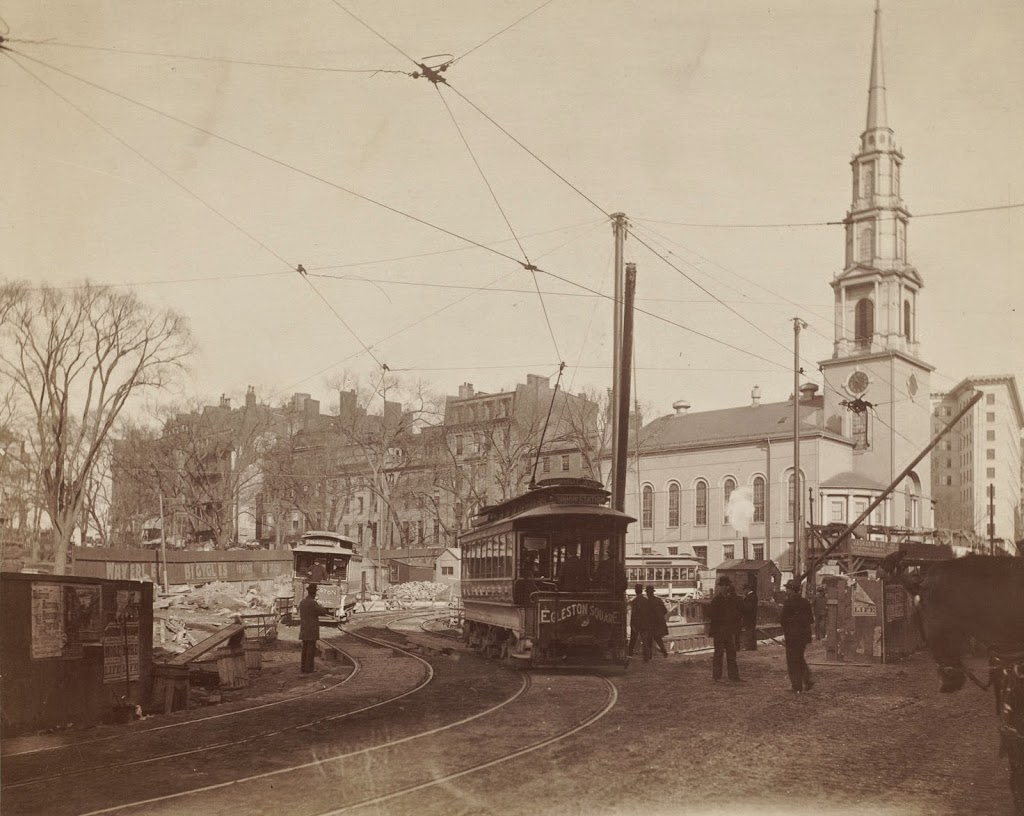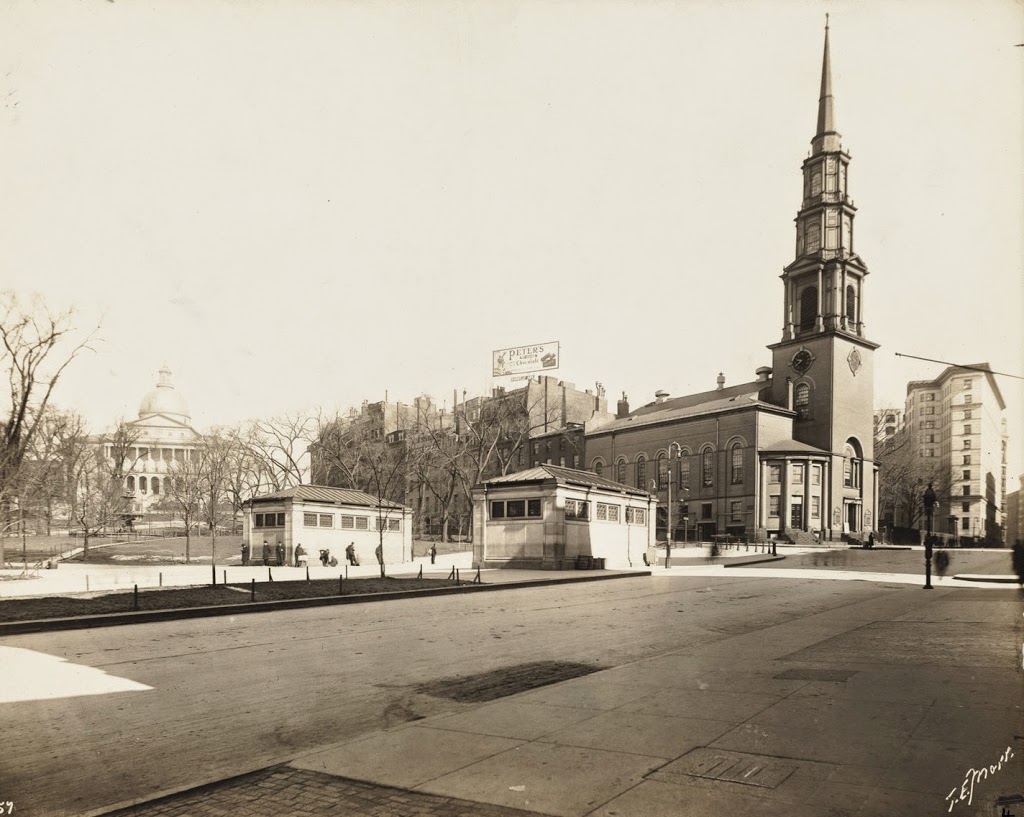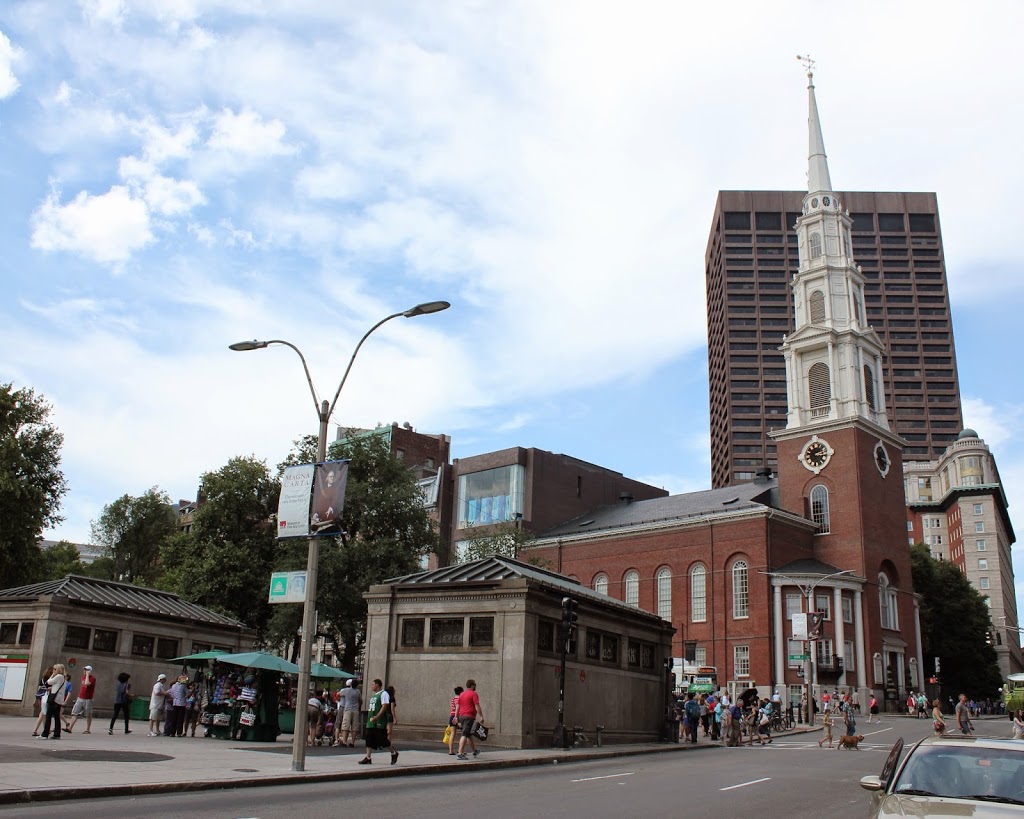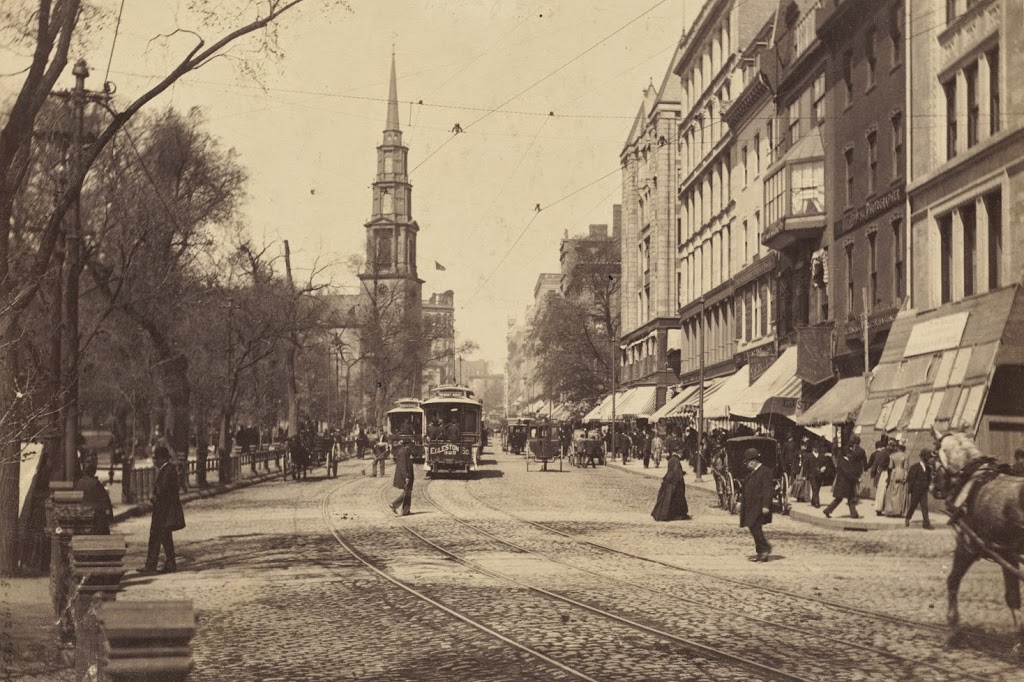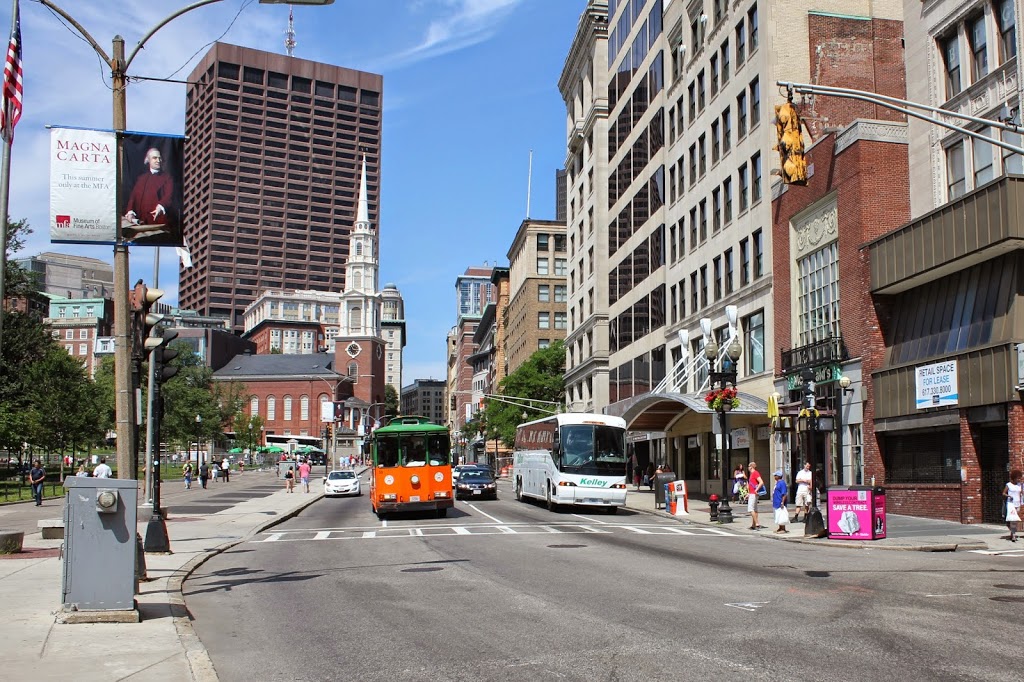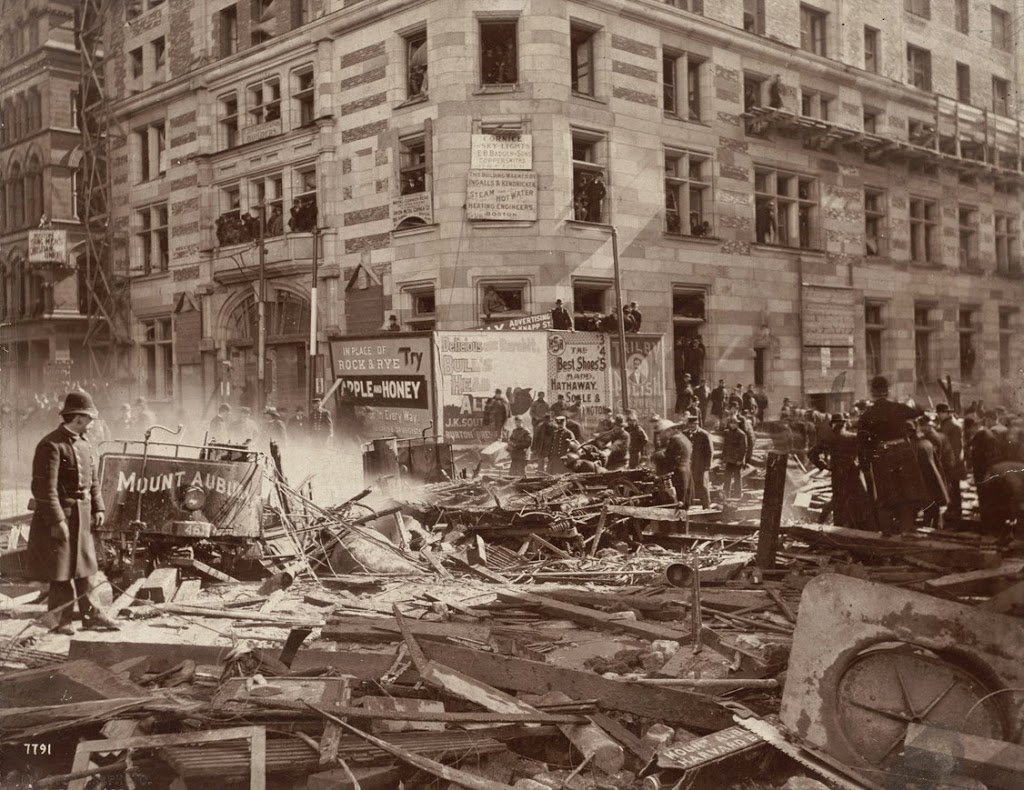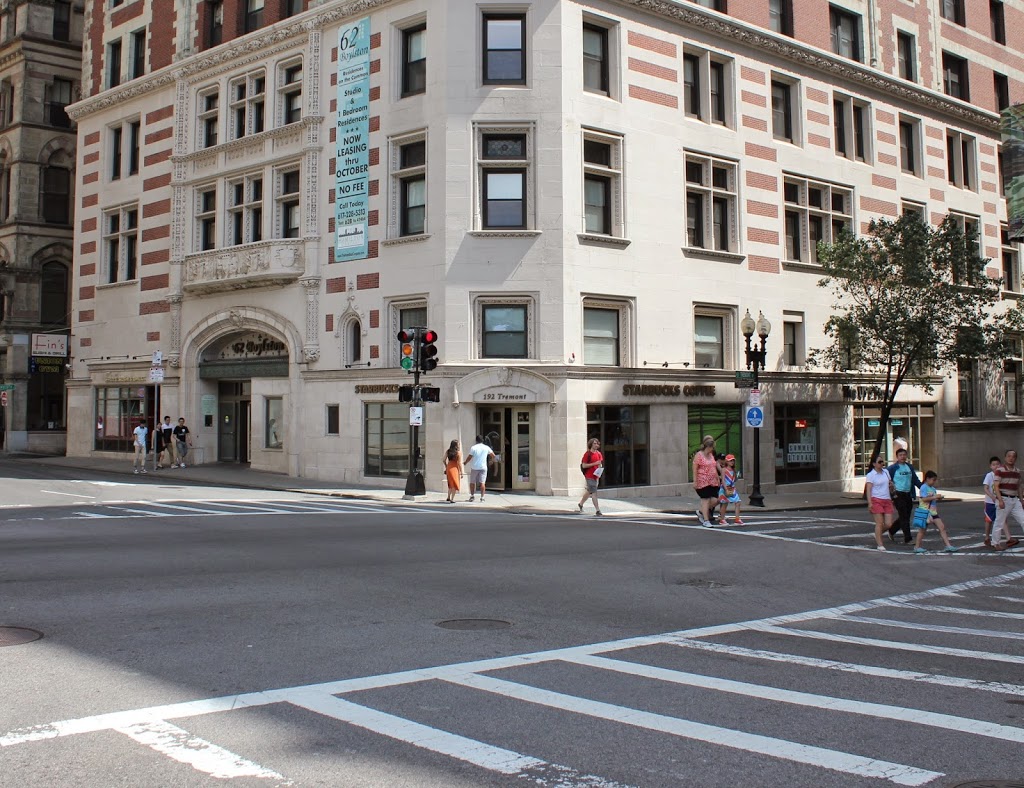Looking toward the Connecticut River from the corner of Main & Canal Streets in Brattleboro, Vermont, around 1917. Image courtesy of the Library of Congress.
The scene in 2014:
On the right-hand side is Brattleboro’s Union Station, which was brand new when the first photo was taken; it opened in 1915. It was built along the Central Vermont Railway, which provided service north through Vermont to Montreal and south through Massachusetts and Connecticut to New London. Today the tracks through Brattleboro are operated by the New England Central Railroad, with Amtrak providing passenger service on their Vermonter route. In the distance in the 1917 photo is the 1878 railroad arch over the Whetstone Brook. It isn’t visible in the 2014 photo, but it is still there, and still carries the railroad over the brook.
The top photo is part of a panoramic view; the other parts can be viewed here:

